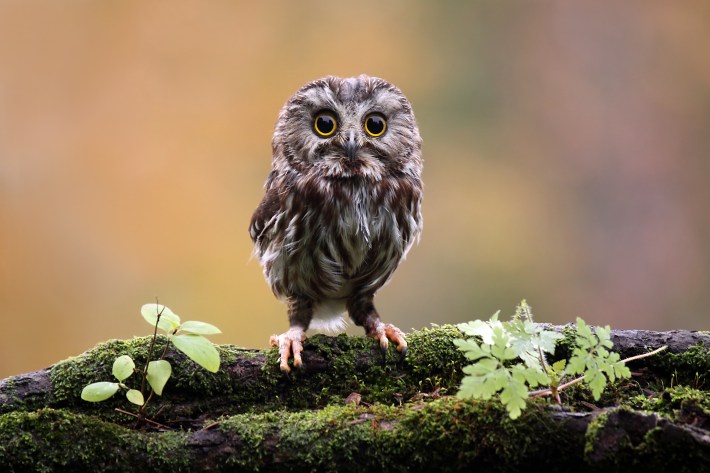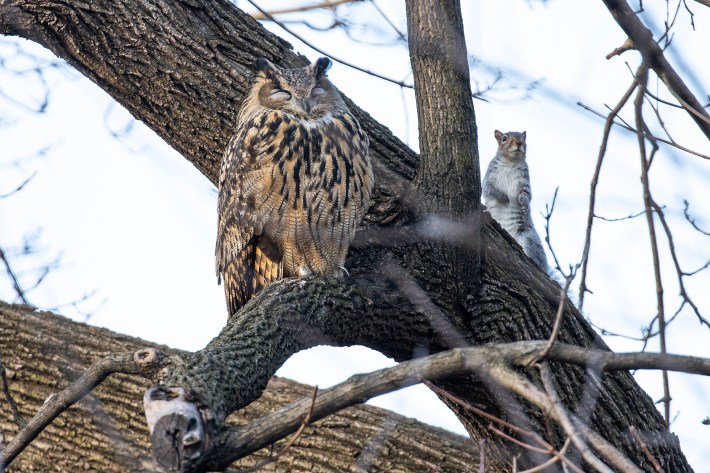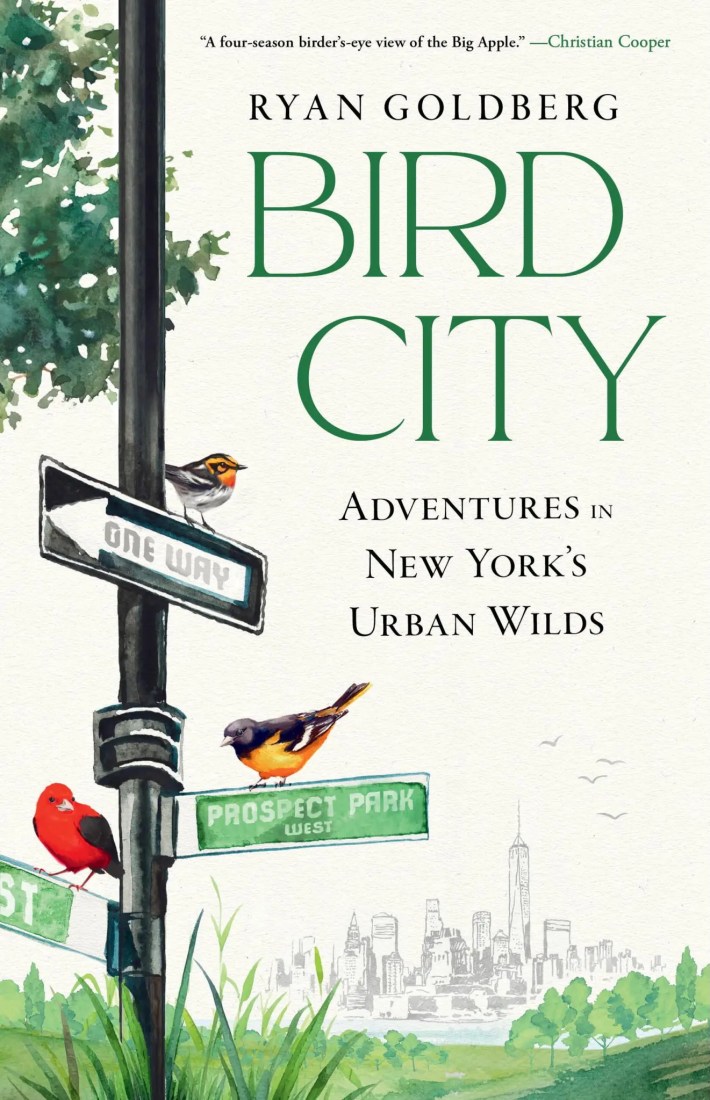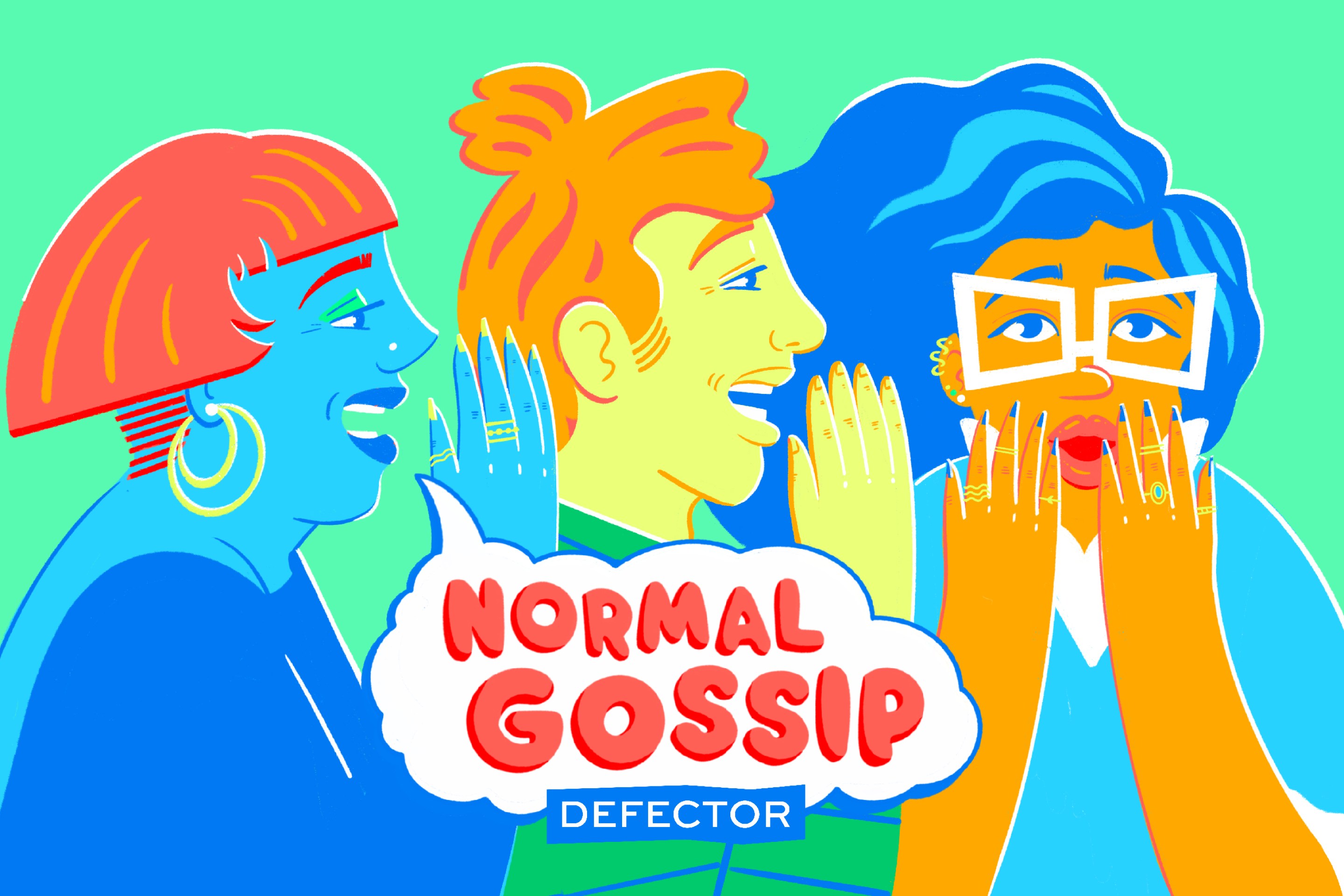We followed the Owl Whisperer around the gun battery toward a grove of pitch pines, where he had seen the saw-whet owl. Then I heard someone ask behind me, “Where are they going?”
I turned around and saw a couple I had met earlier. My heart sank. I had learned that they were getting into birding and that we lived in the same neighborhood. I wanted to tell them. I really did. I knew how exciting this could be for them. But there was an owl code in New York.
Yes, an owl code. This varies by borough. Brooklyn, my home, is the strictest. As an example, its eBird moderators (volunteers who are some of the best birders in the area) will write to people who have submitted an owl sighting and ask them to remove it. (eBird now automatically hides submissions of some highly sensitive owl species from public viewing.) We all want to see owls, but they’re nocturnal, and easily disturbed during their daytime slumber. The American Birding Association’s guidelines seem like common sense: Don’t get too close. Don’t use audio recordings. Don’t publicize the location. Manhattan sits on the other end of the spectrum; Manhattan Bird Alert—a Twitter (now X) account created by a birder and retired hedge fund manager named David Barrett—will post an owl’s roost down to the branch. At last check, Manhattan Bird Alert had almost 90,000 followers.
No other group of birds in New York sparks such heated emotions. Robert DeCandido, a white-haired, raspy-voiced Central Park guide better known as Birding Bob, has compared the Brooklyn Bird Club’s mores to the Mafia’s. “They keep things really secret,” he told a reporter from The New York Times. The Brooklyn Bird Club’s president told me about his own personal policy: He asks his friends not to share owl sightings with him. Consequently, he avoids some thorny questions: Who should I tell? Can they keep a secret? Who’ll disown me if I don’t tell them? Another friend of mine once found a great horned owl nest in Prospect Park and took me to see it. This was exciting news—there were only a few nests in the entire city. He said I could tell my wife, Angie, who’s also a birder (owls aren’t worth upsetting a happy home), but that was it.
If owls are the touch paper, then social media is the match. Wildlife experts suggest that an owl will be stressed by lots of attention. But for many photographers, the chance of getting a photo or a video they can share on Instagram or X—where David Barrett might retweet it—turns otherwise sane people into like-hungry fanatics. When a pair of long-eared owls recently turned up in Central Park, the New York City Department of Parks and Recreation’s X account had to urge people to give them space. I have reason to think this is particular to New York. In other places, birders have shared an owl’s roost with me as freely as recommending a restaurant, but they don’t have to worry about hundreds of people showing up, or a birding scene as competitive as New York’s. Normally, finding an owl takes time, patience, and know-how. As Bruce Yolton of Urban Hawks told me, “Maybe that should be the barrier to entry.” But if a roost is readily publicized, none of this is required.
I can understand why passions run red-hot. Owls are incredible—mysterious, charismatic, easy to anthropomorphize, with their large forward-facing eyes and unblinking gaze. “Perhaps no other creature has been invested with such contradictory meanings across so many different cultures—as a protective spirit, a totem of erudition and an omen of death,” Michiko Kakutani once wrote in the Times. When you see an owl, it feels like you’re touching something ancient, otherworldly—the goddess Athena’s companion, the Chauvet Cave in southern France—even in the middle of New York City.

I returned to Fort Tilden two weeks later with the hope of finding that saw-whet owl again. I looked in the same spot, and there it was, tucked into needles near the trunk of a short pitch pine. The small predator was visible only if you stood a few steps from the base of the tree. I marveled at how the Owl Whisperer had discovered it. The owl was asleep, but red around its bill suggested that it had eaten recently, probably some mouse leftovers from the night before. It was a blocky bird, its wide head nearly half the size of its auburn-streaked body.
Had I not known it was there, I could’ve detected clues from the birds that were very much alert to its presence. Two black-capped chickadees poked around the pitch pines like sentinels, and their twitchy alarm calls were answered by another curious little bird, a red-breasted nuthatch. Like the Owl Whisperer, they knew how to find a saw-whet. I left once the owl opened its yellow eyes and stared at me.
But of course, I hoped to find my own owl. So I ventured to Hunter Island, in the Bronx’s Pelham Bay Park, to visit a grove of tall white pines at the rocky northern tip of the city. Pelham Bay is the city’s largest park, more than three times larger than Central Park, and sits at one end of the 6 local train. The grove was a winter birding destination I’d first heard about from Peter Dorosh. Twenty years earlier, you could see four kinds of owls: barred, great horned, long-eared, and saw-whet. The trees were smaller then.
On a frigid morning, a friendly Bronx birder and I followed Long Island Sound past stands of stunted swamp white oaks on bedrock that ended up in Maine. Named for John Hunter, the man whose estate once included this parcel, the Lenape people of the area had another name for Hunter Island (which is no longer an island): Lap-Haa-Waach King, or “place of stringing beads,” for the shells they gathered to make wampum. We encountered two local birders, one of whom volunteered that there was a barred owl in the pines.
“Don’t advertise it, OK?” he asked kindly. His concern was for the bird’s safety. “I don’t put it on the alerts anymore,” he said.
The barred owl wasn’t difficult to find. At the grove, a pair of Queens birders pointed it out. The owl was three-quarters of the way up and conspicuous; in fact, they told us, a raven had just harassed it.
After a few hushed minutes, the bird turned its head 180 degrees to face us. Its eyes were so dark they seemed like holes, surrounded by pale, funnel-like facial disks. A striped coat framed its face like a cowl that bunched at the chest.
We sighed happily at our good fortune, and the Queens couple showed us an arrow on the path, which they had made with three sticks. The arrow pointed to the roost tree. It was meant for searching birders, but I wasn’t sure I would have noticed it on my own. I could understand their motivation. When you encounter something magical, it’s hard not to want to share it—to leave your own mark.
As promised, my friend and I didn’t advertise it. But two days later, I saw that the man who’d shared the sighting with us had listed it on eBird. Maybe it didn’t matter, I thought, because four birders from Manhattan had already done the same. That was the culture on their side of town. Perhaps they’d reasoned that the barred owl’s hiding spot didn’t put it in jeopardy. After all, the pine grove was hardly a secret location. But I suspect it was just a matter of friendly competition. They wanted to add one more species to their year’s tally, a figure that anyone could find on eBird, and they didn’t feel like waiting until the owl had left for the season.
When did this high-stakes struggle start? As far as I could tell, it began a few years earlier, with another owl, a female barred owl that somebody named Barry.
Barry was first spotted in Central Park on October 9, 2020, in the park’s wooded north end. (I’m not too fond of naming birds, for fear of falling too heavily into anthropomorphism. For ease of storytelling, though, and sometimes for conservation value, it has its pluses, so I’ll go with it.) It was the dark days of the pandemic, and there were lots of new birders for whom observing a wild owl in the heart of this great big city was a mind-splitting event. Some described their desire to see Barry as an obsession. Thanks to David Barrett’s updates, she drew large crowds day and night. The gaggle itself seemed to be part of the attraction. Within a month, the Times had published a front-page article in its local section, headlined “Central Park’s New Celebrity Bird Soaks Up Attention,” in which reporter Lisa M. Collins wrote with anthropomorphic glee about an owl she assumed was male: “He plucks chipmunks with his talons and devours them, seemingly unfazed by adoring fans and the paparazzi, many of whom have already made him Instagram-famous.”
A new celebrity bird? Before Barry, that title was held by a male mandarin duck that appeared in the Pond at Central Park in 2018. He was an escaped aviary bird; local coverage branded him “the hot duck.” David Barrett once tried to coax the duck into the open by tossing him pieces of a soft pretzel, and when that failed, he quacked at it.
But Barry wasn’t the first owl celebrity either. In the 1940s, according to Roger Tory Peterson, a barred owl perched every day for two winters in the same tree on Fifth Avenue, and bus conductors pointed it out to their passengers. Unlike that owl, however, Barry had her every move instantly disseminated to tens of thousands of people. “This is the information age,” Barrett told the Times. “People can report what they see.”
Barry was found that 2020 night by Birding Bob. DeCandido charged 10 bucks for a nighttime owl walk, and Barry became a major selling point for him. He would blast hoots from a portable speaker to pull her into the open, then shine a flashlight on her. DeCandido later compared his tactics to fishing, saying, “I go out there with an audio lure.” Back in 2008, when he charged five dollars, a Times reporter followed along. DeCandido’s target that night was an eastern screech owl, a robin-sized cavity nester. His speaker blared the owl’s whinnying call on loop, drawing out the bird at a time when it was looking for a mate. As the reporter described it: “Bird and machine called back and forth to each other, a haunting sound of longing in the darkness.”
Does that sound disruptive to you? DeCandido, who holds a PhD in botany, says he’s never harmed a bird, though his defense tends to be circular: “The more people see this, the more they’ll like owls, and the less they’ll want ice-skating rinks and things that reduce what owls need, which is woods.” But he’s also frank. “It’s good for business,” he says.
DeCandido relies on audio lures, or “playback,” as birders call them, all year long. In the spring, he rolls through the Ramble with his Bluetooth speaker sounding the distress calls of songbirds. I should repeat that: distress calls. Until you’ve experienced it in person, it’s hard to convey just how loud, obnoxious, and grating it is.
In a short Times documentary, DeCandido acknowledges that his behavior is antithetical to people’s search for peace in nature. “To say that I’m hated, you know, that’s mild.” The film ends with him in the Bronx’s Van Cortlandt Park at night, blasting hoots from a dance-hall speaker and shining his flashlight on a jumpy barred owl.
Using playback is against Central Park’s rules. But if it sounds harmless enough, I heard a gruesome story on my visit to Hunter Island that suggests otherwise. Hoping for the perfect shot, a photographer there used playback to wake up a saw-whet owl. A barred owl in the woods responded to the recording, found the little owl, and tore it to bits in front of the photographer.
The owls that show up in New York in the winter are usually young or migrating, Bruce Yolton told me, so this may be the most difficult and stressful time in their lives—as it was with Barry. Large groups camped out beneath her roost tree during the day, and at night they tracked her as she hunted. Yolton wrote a 3,500-word blog post called “A Wild Barred Owl Is Not a Celebrity,” which challenged the media coverage and profit-making focused on Barry and her “‘Beatlemania’ type fan base.” Yolton was a vocal critic of DeCandido and Barrett, but he was a lonely voice in the wilderness.
Unusually, Barry didn’t leave the park to seek a mate, and she stayed through the summer of 2021. She became atypically active during the day, another sign that perhaps something was not right. Early one day in August, around 2:30 a.m., she died after colliding with a maintenance vehicle on the park’s drive. #RIPBarry trended on Twitter. Public records reporting by The City showed that the owl had high levels of rat poison in her bloodstream, leaving her at risk for a fatal collision. “There’s a lot of us who are devastated today,” a photographer told the Times. “We always knew she might fly away and start a family, but none of us were prepared for this.”
I was slightly turned off by the crowds following her, so I never went to see Barry. I felt for those who grieved her, though, even if it was an outcome that was not all that surprising. City rats make for easy, available prey, and many urban raptors, from owls to red-tailed hawks, fall victim to poisoning each year. But I couldn’t help but wonder what influence Barry’s paparazzi may have had on her ability to hunt more freely and with less interference.
There was a break-in at the Central Park Zoo. On February 2, 2023, someone scaled the waist-high fence of the Temperate Territory section, walked past snow leopards, snow monkeys, and red pandas, and cut open the steel-mesh enclosure of a Eurasian eagle-owl named Flaco. At 8:30 p.m., a zoo employee reported the vandalism to police. By then, Flaco was gone.
Flaco flew into Central Park the morning after his escape. I say “flew,” but he crashed into branches while making short flights from one tree to the next, tiring himself out. He was terrible at hiding, a necessary skill for any owl on the outside. Owls roost in conifers during the winter, but he perched more than 60 feet off the ground in a bare deciduous tree. He was lashed by the wind and spooked by a squirrel.
Flaco tried to hunt. He parked himself by some exposed Manhattan schist and waited awhile for a brown rat to run over it. There was a neat echo to the fact that wild Eurasian eagle-owls are drawn to rocky outcrops.
Zoo staffers also made their move. While playing audio recordings of female Eurasian eagle-owls, they tried to capture Flaco with traps baited with a lab rat. Flaco pursued the bait and briefly got tangled in the netting, but he flew off as staffers rushed forward. And they were far from the only humans on the scene. David Barrett was using the #FreeFlaco hashtag on Manhattan Bird Alert as he live-tweeted about the recovery efforts. Yolton told me that 30 people he had never seen birding in the park before arrived during Barrett’s play-by-play, and they milled around the traps like bodyguards. Jim Breheny, the director of the Bronx Zoo, castigated Barrett on Twitter: “Whatever your intent, your need to seem relevant or involved in this effort is not at all helpful.” But Barrett, it appeared, didn’t want to help.

The next day, a wildlife photographer named David Lei posted a photo on Twitter that he had taken of Flaco holding a rat in his beak. He had finally caught one the previous night. For the next two days, the zoo still tried to lure Flaco to traps, but he ignored them and continued hunting. The zoo decided to call off its capture attempts, sending out a statement that read, in part: “Several days ago, we observed him successfully hunting, catching and consuming prey. We have seen a rapid improvement in his flight skills and ability to confidently maneuver around the park. A major concern for everyone at the beginning was whether Flaco would be able to hunt and eat; that is no longer a concern.”
After the Central Park Zoo’s statement, Flaco relocated to the Loch, the quiet woods that Barry the barred owl had roamed. The Loch was conveniently located across from a construction site at the Harlem Meer, where Flaco was photographed from a distance eating rats on top of a yellow excavator. Seeing that, I couldn’t help but smile.
I decided to visit him again on the first afternoon of spring. Several hundred yards into the woods, I saw around 20 people spread out on either side of the creek. Flaco, his head tucked in, rested in the crook of a tall red oak that bent over a gentle waterfall. The dark streaks on his back matched the oak’s runners, lending some camouflage. It was around four, and over the next three hours he’d have a steady watching party. Hundreds of people paused briefly to look up at him—dog walkers, joggers, groups of schoolchildren. They all knew his story.
Soon, Flaco woke up and began hooting. He put his entire body into each hoot, one every 15 to 45 seconds, raising his tail and leaning forward in a slo-mo Hungry Hungry Hippos move. The combination of the dark feathers at the bottom of his face and his fluffy white throat feathers brought to mind the Cheshire Cat. Flaco’s hoots echoed through the Loch. Then he walked across the branch to warm his tawny body in shoots of sunlight; he puffed out his feathers and preened, cleaning his wings and talons.
I sat on a wooden fence and heard conversations in English, Hebrew, Spanish, and Mandarin. A familiar refrain was, “Are you going to stay for the flyout?” The flyout is the sweet spot for respectful owl viewing, the twilight moment when these nocturnal predators rouse from their daytime slumber and venture into the night.
I eavesdropped on a conversation among five older women that told me a lot about Flaco’s fandom. To them, the boundaries between wild and captive were loose. They shared stories about a great horned owl in Central Park named Geraldine, and about Gus, the Central Park Zoo’s late polar bear who swam laps in his pool for up to 12 hours a day. They chatted about Flaco the way people of an earlier generation must have talked about the first moon landing. Where were you when you heard ... he was at the playground? In the evergreen? Outside the zoo? Uptown? One of the women had a camera; none had binoculars. They were animal lovers. “He’s used to us,” one said of Flaco. “He’s adapted. He likes people.” They grieved Barry. “She gave people an excuse to come to the park during COVID,” said another.
Looking around, I realized that the people waiting for Flaco to fly out were as diverse as the city itself. This was a social gathering, an owl-watching commons. There aren’t many spaces left to meet in New York that don’t require you to spend money, I thought. A park is one, and this might explain the growing popularity of urban birding. But one bird had brought this crowd together.
About 40 minutes from sunset, Flaco turned to face the construction site and resumed hooting. His hoots sounded louder now, or maybe the park was just quieter. Only the die-hards remained, including a small band of photographers on Huddlestone Arch, who were hoping for a head-on shot as Flaco flew to the Harlem Meer. I noticed Bruce Yolton on his own, off to the side of the creek, and I walked over to say hello. He had just returned from two weeks in southern Africa, but he was quickly back on the Flaco beat. Yesterday, Flaco had nibbled on a rat he’d saved from the previous day, Yolton told me; the owl used to wolf them down whole but now was stashing for the future. Yolton—and countless other observers—would be there along the way. Almost a year later, he was still blogging about Flaco.
Who would have imagined the months ahead? The jokes on late-night TV, the murals of Flaco around the city, the worldwide media coverage, his weeklong trip downtown, and then his return to the fire escapes, windowsills, and air conditioners of the Upper West Side, like so many rock ledges. His one-year anniversary on the loose won him stories in the Times, Gothamist, ABC News, the Associated Press, and many, many more news outlets. He was world famous. Yolton also thought Flaco was confused. He would hoot for hours at night on a water tower or some other promontory, and, of course, no mate would ever answer. “No wild Eurasian eagle-owl hoots that much,” Yolton told me. And though Flaco didn’t lose his appetite for rats, he was also seen eating pigeons. The zoo’s employees continued to monitor him. Manhattan Bird Alert made sure people kept watching.
I didn’t know it then, but this was the last time I’d see Flaco. Three weeks after his one-year anniversary, he was found facedown in a courtyard on West 89th Street.

Adapted from BIRD CITY by Ryan Goldberg. Copyright © 2025 by Ryan Goldberg. Used with permission of Algonquin Books of Chapel Hill, an imprint of Little, Brown and Company. New York, NY. All rights reserved. Order it here.






